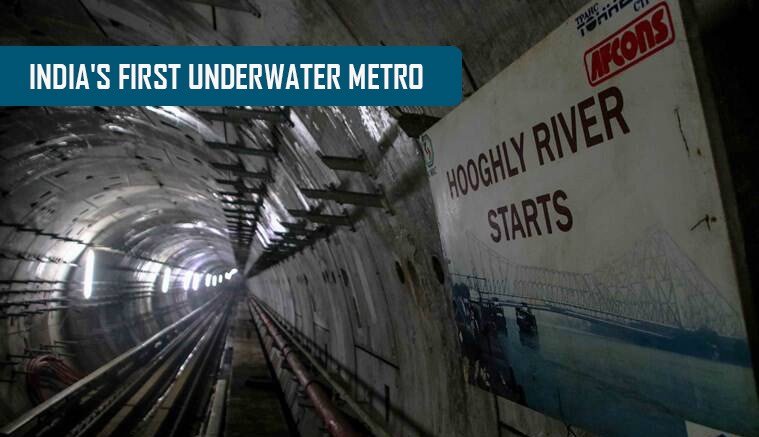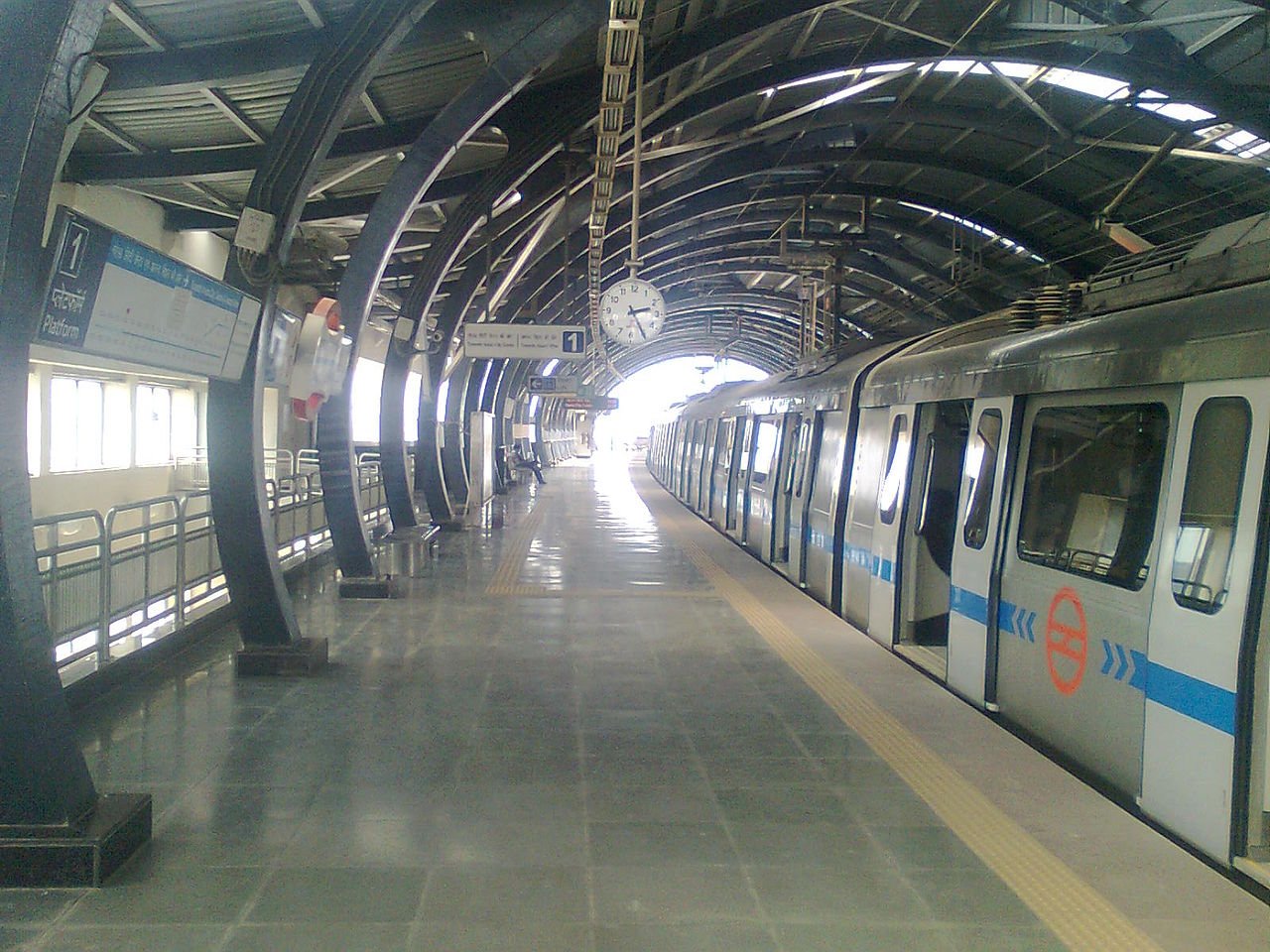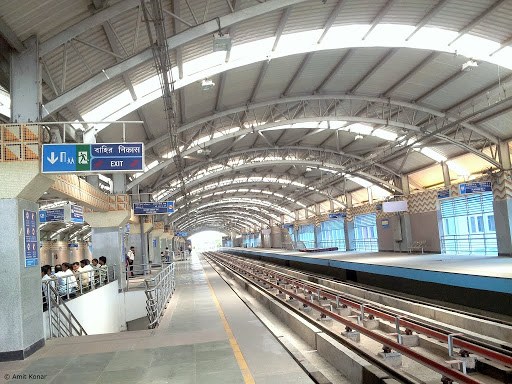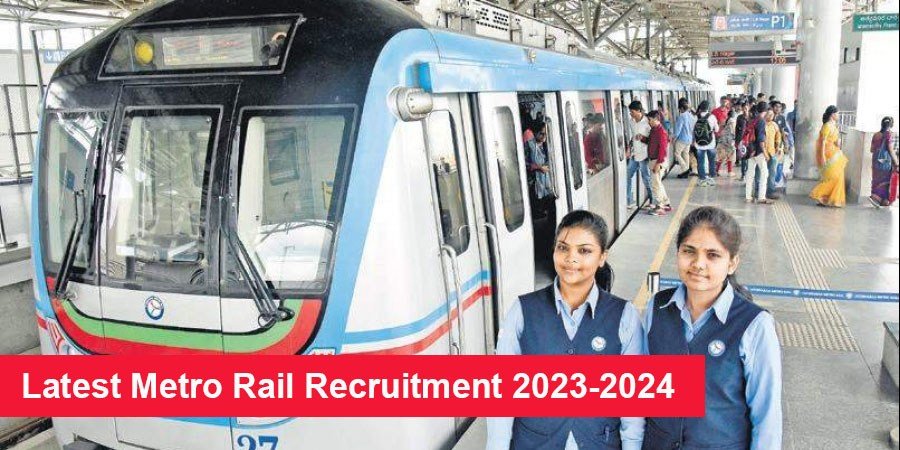Table of Contents
India's first Underwater Metro in Kolkata
The underwater metro in Kolkata is a marvel of modern engineering that has transformed the city’s transportation system. The project was initiated in 1971, but it wasn’t until 2008 that work began on constructing the first phase of the metro line. The underwater section of the metro stretches for nearly 16 km and runs beneath the Hooghly River, connecting Howrah to Salt Lake City. This section comprises several tunnels, including a twin-tunnel system built using an earth pressure balance tunnel boring machine (TBM). It’s fascinating to note how these TBMs are capable of excavating through soil and rock formations without causing any significant damage to surrounding areas or structures above ground level.
Underwater Metro in Kolkata
How Kolkata is Creating History with India's First Underwater Metro- Explained?
The city of Kolkata is all set to create a buzz with the introduction of India’s first underwater metro train, which will be an engineering marvel. This futuristic mode of transportation will enable commuters to travel seamlessly across the Hooghly River, bridging the gap between West Bengal’s capital and Howrah.
The authorities have successfully conducted a trial run from Howrah Maidan to Esplanade on 12th April, with officials and engineers onboard testing its feasibility and safety measures. The underwater metro in Kolkata is expected to revolutionize public transport in the region as it promises swift connectivity that was never before possible. Commuters can eagerly look forward to getting around without having to brave traffic or long queues at various transit points by late 2023 when this feat of technology opens up for public use!
The ambitious project of an underwater Kolkata metro is finally taking shape, and the latest announcement by Metro Railway general manager P Uday Kumar Reddy has only added more excitement to it. As per his statement, trial runs between Howrah Maidan and Esplanade station will be conducted over the next five to seven months before regular services begin on this stretch.
This phase of testing is crucial for ensuring that all safety measures are in place and any technical glitches are ironed out before commuters can start using the service. With a length of 16.6 kilometers, the underwater metro line will connect Salt Lake Sector V with Howrah through 12 stations, making it one of the most significant infrastructure developments in recent times for Kolkata residents. Off course it’s hard not to feel excited about what lies ahead for Kolkata’s transportation system!
East West Metro Tunnel - Kolkata Metro
The East West Metro Tunnel of under water Kolkata Metro is an ambitious project that will connect the eastern and western parts of Kolkata through a state-of-the-art underwater metro route. The idea behind this project is to provide faster, safer, and more convenient transportation options for the people of Kolkata.
This innovative infrastructure development involves digging a tunnel under the Hooghly River, which will be completed using advanced technology and engineering expertise. Upon completion, it is expected to reduce travel time significantly between Howrah and Salt Lake by cutting down on traffic congestion across the city’s roads. The East West Metro Tunnel promises to pave the way for modernizing public transportation in India while highlighting its importance as a global leader in developing new technologies that can revolutionize how we move around our cities today!
How Kolkata Is Planning To Operate An Underwater Metro Line?
Kolkata, the cultural hub of India, is all set to add another feather to its cap by introducing an underwater metro. It’s a remarkable engineering feat that has been accomplished by constructing a tunnel under the river Hooghly with an internal diameter of 5.55 meters and external diameters of 6.1 meters. The underwater metro in Kolkata will be the first-of-its-kind in India and is expected to ease traffic congestion on the surface level significantly. The construction work was carried out using a tunnel-boring machine (TBM), which made this project possible despite several challenges posed by environmental factors such as high tidal waves, water pressure, etc., during the digging process.
Kolkata Underwater Metro: Part of East-West Metro Corridor
Kolkata is all set to make transportation history with its latest project – an underwater metro line. As part of the East-West Metro Corridor, this ambitious project will connect Howrah and Salt Lake City through a 16 km stretch that includes a 520m underground tunnel beneath the Hooghly river. The underwater metro in Kolkata will not only provide commuters with a faster and more efficient mode of transport but also showcase advanced engineering feats. The construction of this marvel involved drilling two tunnels under the riverbed using high-tech machinery while maintaining water pressure and ensuring environmental safety. Additionally, state-of-the-art technology has been employed for ventilation and lighting systems inside the tunnel to ensure maximum safety for passengers during their journey beneath one of India’s most iconic rivers.
Underwater metro in Kolkata Route
With plans to extend underwater metro in kolkata route further into other parts of Kolkata city, it is clear that Kolkata’s underwater metro line is set to revolutionize urban transport in India as we know it!
The underwater metro in kolkata route is also is a fascinating engineering marvel that has captured the attention of people all over India. This ambitious project involves constructing a network of tunnels and stations under the Hooghly River, which separates Kolkata from its sister city Howrah.
The project, which has been under construction for several years now, involves the creation of an underground tunnel that will run parallel to the Hooghly River. The tunnel itself will connect two stations – Howrah and Mahakaran – on either side of the river. Passengers riding on this route can expect a breathtaking view of marine life thanks to large windows installed along the length of the train. In addition, each train coach will be equipped with advanced safety features such as fire detection systems and emergency evacuation plans. This ambitious project is set to transform Kolkata’s transportation system by reducing travel time between these two key locations from 30 minutes to just five minutes!
Idea behind Underwater metro in Kolkata
The idea behind this project is to create a faster, more efficient mode of transportation for commuters who otherwise have to brave long hours in traffic or contend with inadequate public transit options. Once completed, the underwater metro will provide a crucial link between north and south Kolkata, reducing travel time significantly and making it easier for people to access jobs and services on either side of the river.
However, building an infrastructure like this requires incredible skill and precision; workers must dig through layers of mud, rock, and silt while also ensuring that water doesn’t seep into the tunnels during construction or operation. Despite these challenges, progress on the underwater metro continues at an impressive pace – proof that innovation can overcome even seemingly insurmountable obstacles!
Construction of Underwater Metro in Kolkata
The Underwater metro in Kolkata has been a long-awaited project, aimed at easing the city’s notorious traffic congestion. However, due to the inability of GoWB to provide land on the surface along the original route between Sealdah metro stations and Mahakaran metro stations, realignment was necessary. Despite this change, even on the new alignment, a station planned at Wellington had to be dropped as Government of West Bengal was unable to provide the required land on the surface. The underwater metro is an ambitious project that aims to connect Kolkata’s northern suburbs with its central business district through an underground tunnel beneath Hooghly River. With such significant challenges faced during construction already evident, it remains vital for stakeholders involved in this project from both public and private sectors work together towards achieving effective solutions for future infrastructure developments across India.
Underwater Metro Timeline
Underwater Metro Timeline Began in 2009 to 2015
The underwater metro in Kolkata timeline began with the awarding of a contract to ITD-ITD Cementation JV for building the underground section from Subhash Sarabor to Central Station in 2009, followed by physical construction of the E–W corridor. In 2010, Afcons was awarded the contract for building the underwater tunnel section from Central to Howrah Maidan. However, a realignment proposal was made in 2012 to avoid displacing families and hawkers along Bowbazar and Brabourne Road. The revised blueprint was approved by Railways and JICA between Sealdah to Howrah station in 2015, with one key stop at Subodh Mullick Square being done away with to avoid eviction of hawkers.
Underwater Metro Timeline during 2017 to 2018
In March 2017, Afcons named their tunnel boring machines Prerna and Rachna after their employee’s daughters. Finally, on May 23rd of that year, the first TBM completed tunneling the eastbound tunnel under Hooghly River – marking an important milestone in this ambitious infrastructure project for Kolkata city.
The Underwater Metro in Kolkata timeline saw several significant developments unfold between 2017 and 2018. In June 2017, the second TBM completed tunneling the westbound tunnel under the river Hooghly, marking a major milestone in the project’s progress. That same month, permission was received from the Archaeological Survey of India for construction of a tunnel within 100 meters of three heritage buildings. In July 2017, a tram depot at Esplanade was shifted to facilitate construction of a metro station, while people from 11 buildings on Brebourne Road were evacuated in phases as TBMs passed beneath them. The mini-bus stand at Mahakaran was also relocated that August to make way for an underground station.
By December 2017, tunnelling between Mahakaran and Esplanade stations was ongoing. In March 2018, the first TBM named Prerna reached Esplanade station after completing its section from Howrah Maidan to Esplanade – this tunnel would be used by Howrah-bound traffic only. Finally, in April 2018, the second TBM named Rachna completed boring of another tunnel between these two stations. These milestones represent significant steps forward for Kolkata’s underwater metro system and demonstrate how much progress has been made since planning began years prior.
Underwater Metro Kolakta in 2019 till Compilation
The Underwater Metro in Kolkata timeline has been a long and eventful journey since its inception. In 2019, the tunneling process faced a major setback when it had to be stopped due to lack of muck cars that needed upgrading. However, work resumed after just five days, showing the determination and resilience of the team behind this project. Months later, in June 2019, TBMs Rachna & Prerna were finally taken out after being parked for several months at Curzon Park. The successful loading of both TBMs on trailers marked an end to their journey of tunneling under a river as part of this ambitious project. Fast forward two years later to May 2021 when the tunnelling for East West Metro Project was completed successfully; proving that even with challenges along the way, perseverance can lead to success in executing complex infrastructure projects such as this one.
Conclusion
The Underwater metro in Kolkata timeline is a testament to the city’s commitment to innovation and progress. The first phase of this ambitious project, which connects Salt Lake Sector V with Howrah Maidan, was inaugurated on February 13th, 2020. This milestone achievement puts Kolkata at the forefront of modern transportation infrastructure in India and demonstrates its potential as a hub for business and commerce. The underwater tunnel stretches over 16 kilometers beneath the Hooghly River and features six stations along its route. It is equipped with state-of-the-art technology that ensures safety and sustainability for passengers while reducing travel time by up to an hour compared to traditional modes of transport. In addition, this project has created job opportunities in construction, engineering, and other related fields. Overall, the underwater metro in Kolkata timeline reflects the city’s determination to push boundaries and make history through innovative solutions that benefit its citizens both now and in the future.




